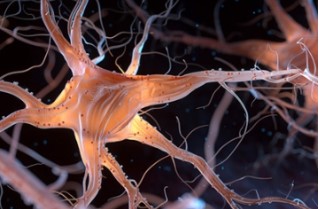
Within the complexities of Alzheimer’s disease, there is an insidious aggregation of misfolded proteins—beta-amyloid and tau—that disrupts neuronal connections. This pathological accumulation coincides with a decreased glucose metabolism in specific brain cells, notably astrocytes and microglia. Astrocytes, in particular, serve a crucial role in energy provision; they metabolize glucose into lactate and shuttle it to neurons as fuel. Interestingly, recent studies have shed light on the enzyme indoleamine-2,3-dioxygenase 1 (IDO1) in astrocytes, probing its implications in Alzheimer’s disease progression.
Pioneering research spearheaded by Dr. Katrin Andreasson at Stanford University has honed in on the influence of IDO1 on astrocytic glucose metabolism, assessing its correlation with Alzheimer’s pathology and cerebral functionality. The NIH-sponsored study, published in Science on August 23, 2024, revealed that elevated levels and activity of IDO1, induced by beta-amyloid and tau, curtailed the conversion of glucose into lactate. Remarkably, the inhibition of IDO1, either pharmacologically or by silencing its gene, reinstated lactate production, overshadowing the impediments posed by beta-amyloid and tau.
At the heart of learning and memory within the brain lies the hippocampus. In studying a variety of Alzheimer’s mouse models, researchers observed a significant suppression in lactate production within this crucial region. Consequently, these mice exhibited compromised spatial memory and diminished synaptic plasticity – the vital process by which neural connections strengthen over time. Remarkably, the inhibition of the IDO1 enzyme reversed these deficits back to baseline. However, the benefits of IDO1 inhibition on synaptic plasticity were negated when neuronal lactate import was obstructed. This implies a pivotal role for lactate in the hippocampus for both spatial memory and neural plasticity.
Seeking relevance to human Alzheimer’s disease, the team tapped into stem cells derived from individuals with and without the late-onset form of the ailment. Upon differentiating these stem cells into astrocytes and neurons, they discovered that those from Alzheimer’s patients showed a reduction in glucose metabolism and lactate production. Furthermore, Alzheimer’s astrocytes were deficient in shuttling lactate to neurons. Once again, IDO1 inhibition reestablished normal levels of lactate production and transfer to neurons.
These findings elucidate a previously unseen consequence of beta-amyloid and tau presence: the escalation of IDO1 activity in astrocytes, which in turn dampens glucose metabolism and lactate output. The resultant scarcity of lactate starves neurons of a key energy substrate, underscoring the profound metabolic disruption at play in Alzheimer’s disease.
Inhibiting the enzyme IDO1 to restore lactate production could potentially prevent or reverse the cognitive impairments associated with Alzheimer’s disease. IDO1 inhibitors, which have already been developed for cancer therapy, may be repurposed for treating Alzheimer’s.
Andreasson highlights the significance of the observed improvement in brain plasticity in mouse models with both amyloid and tau pathologies. “The fact that we observed this enhancement in two distinct pathologies, and the drugs seem effective for both, was particularly thrilling for us,” she remarks.
This indicates that various pathologies may compromise neuronal function through a shared mechanism. Consequently, this therapeutic strategy holds promise not only for Alzheimer’s but also for other neurodegenerative disorders.
